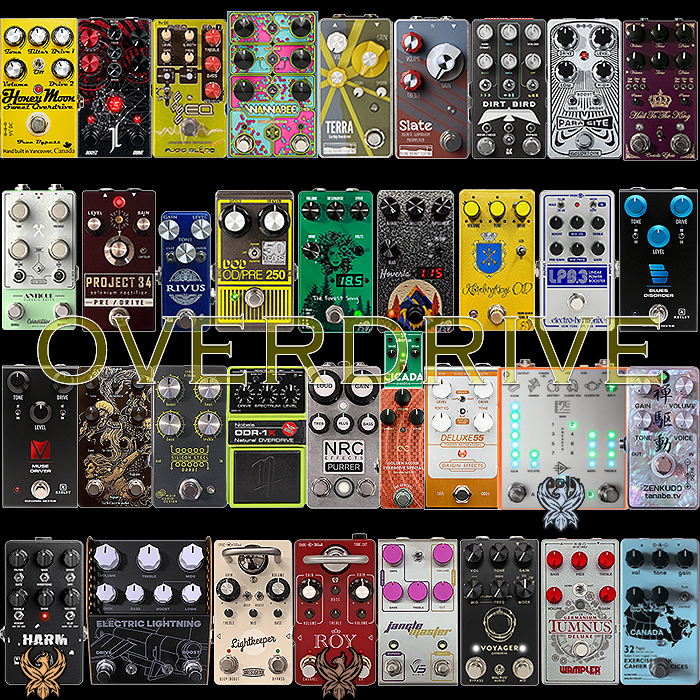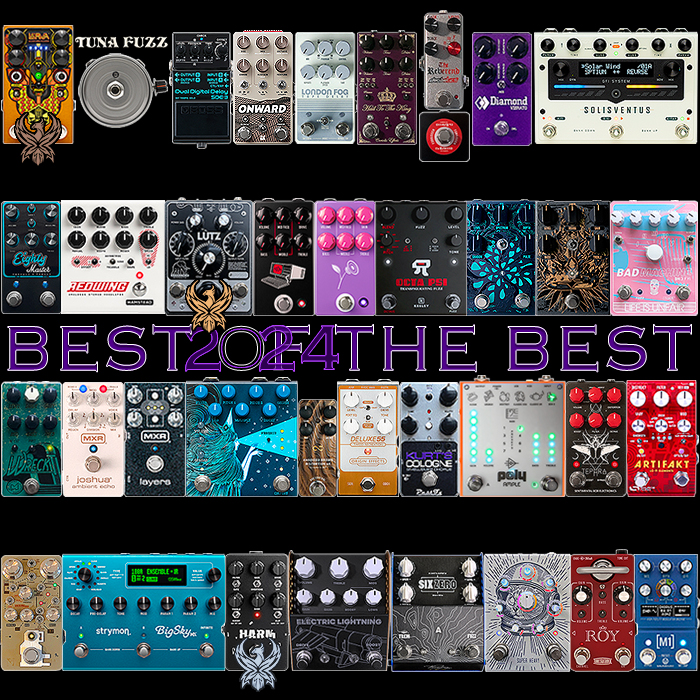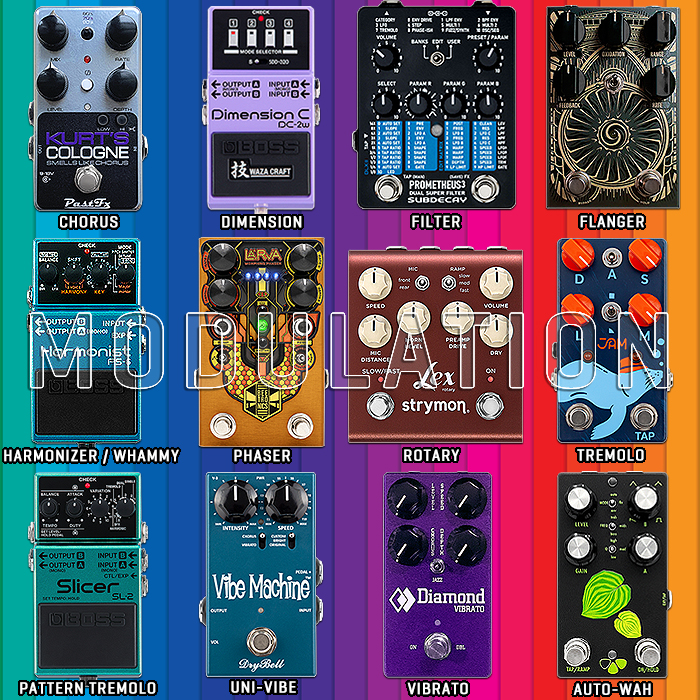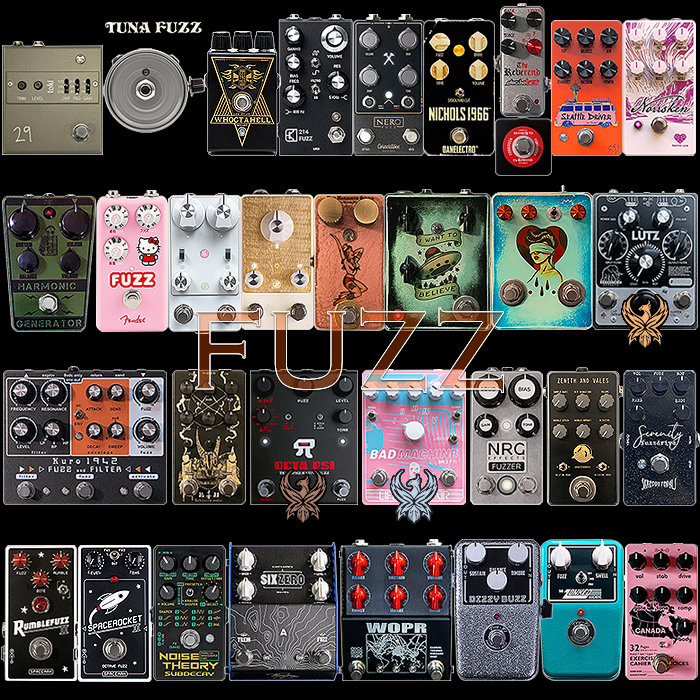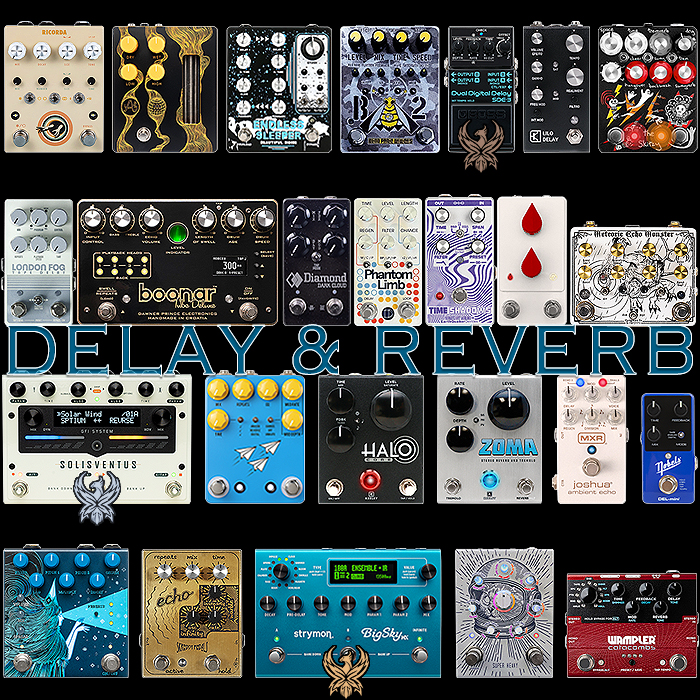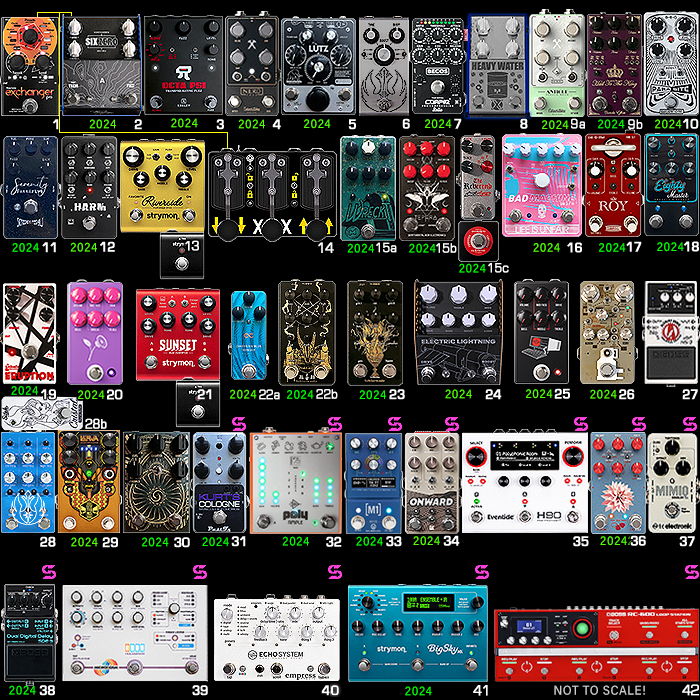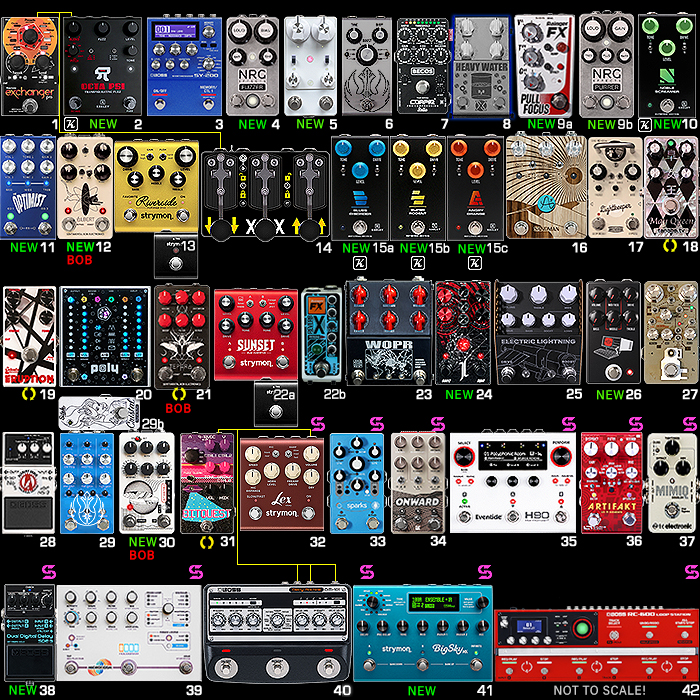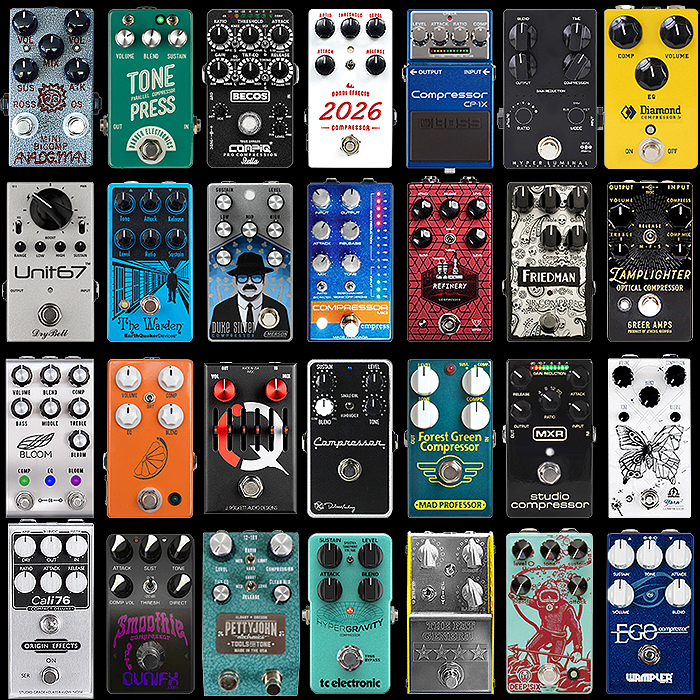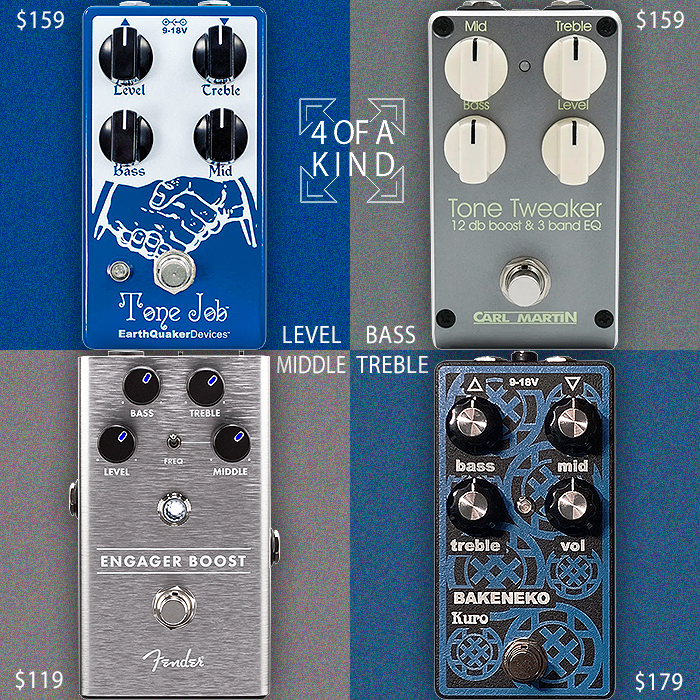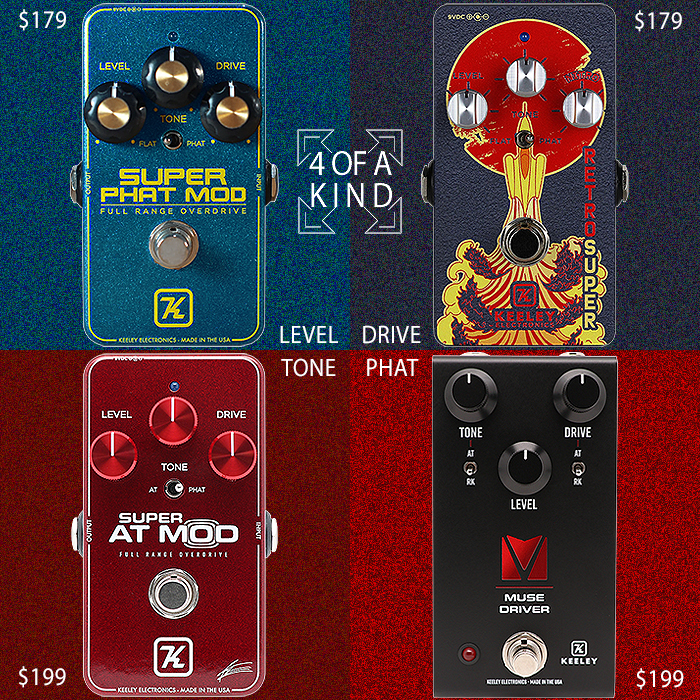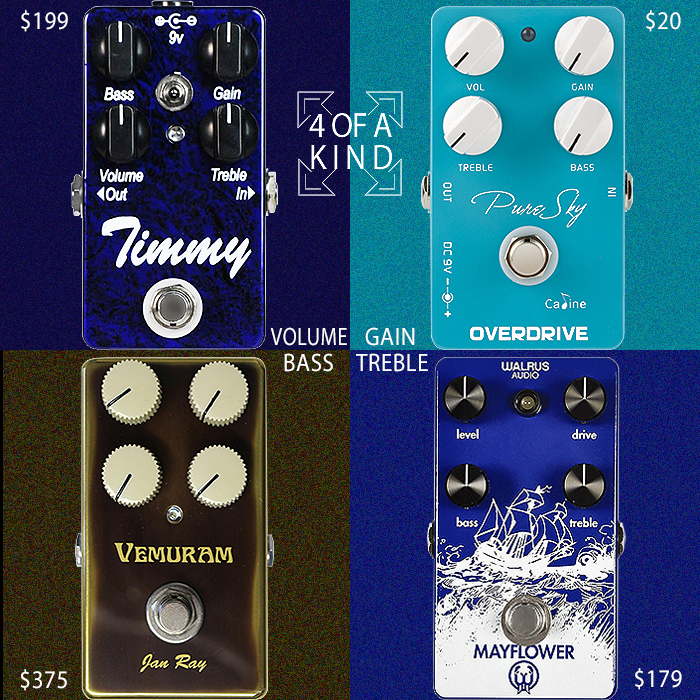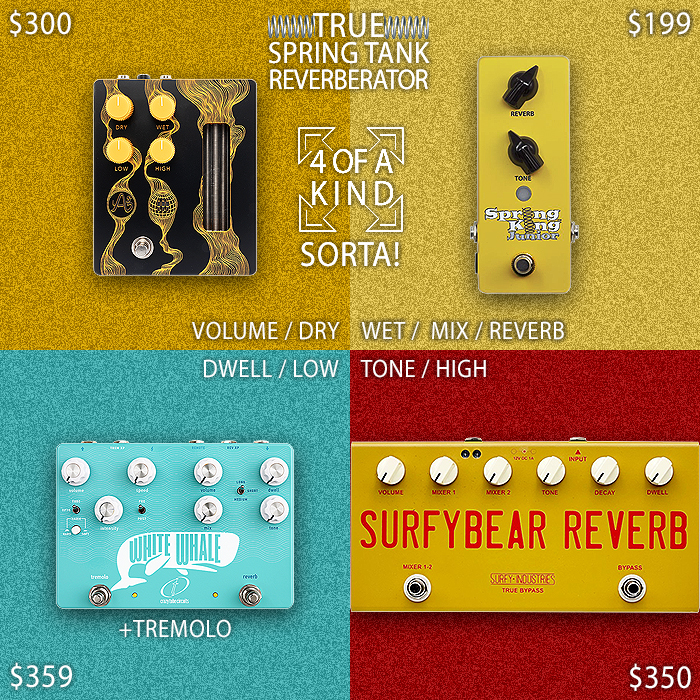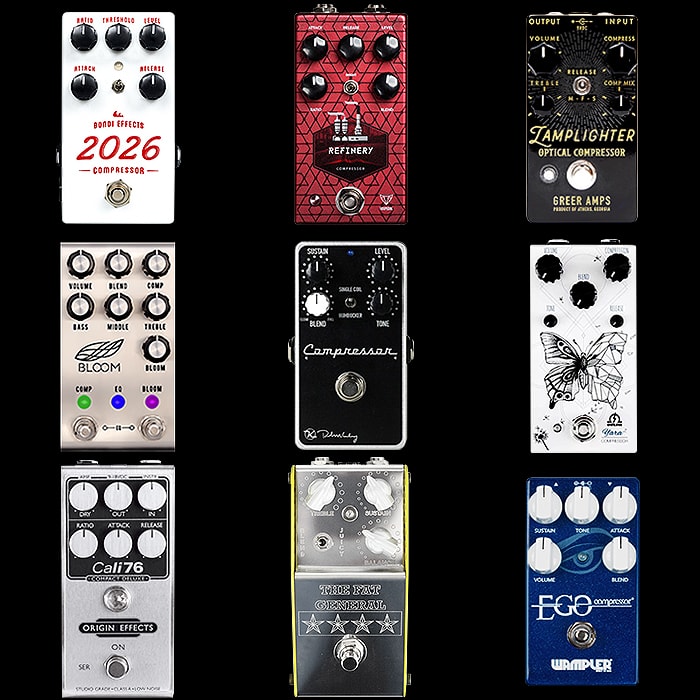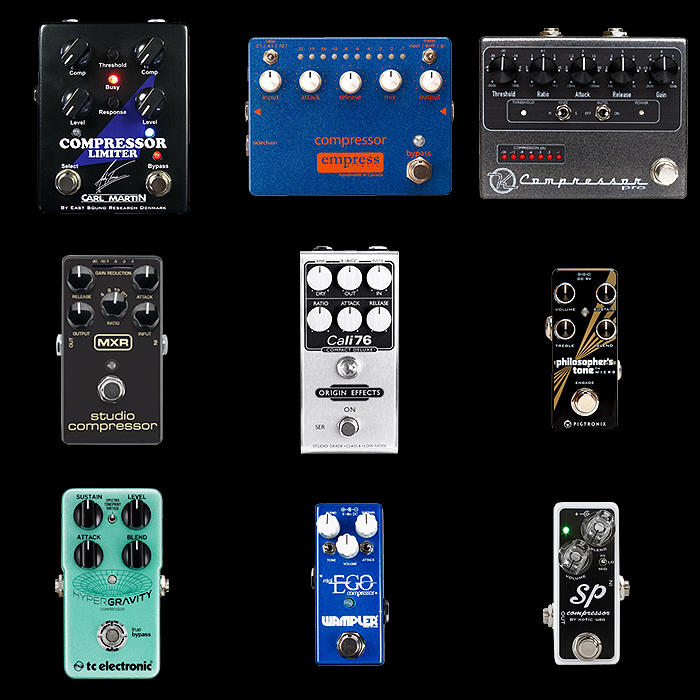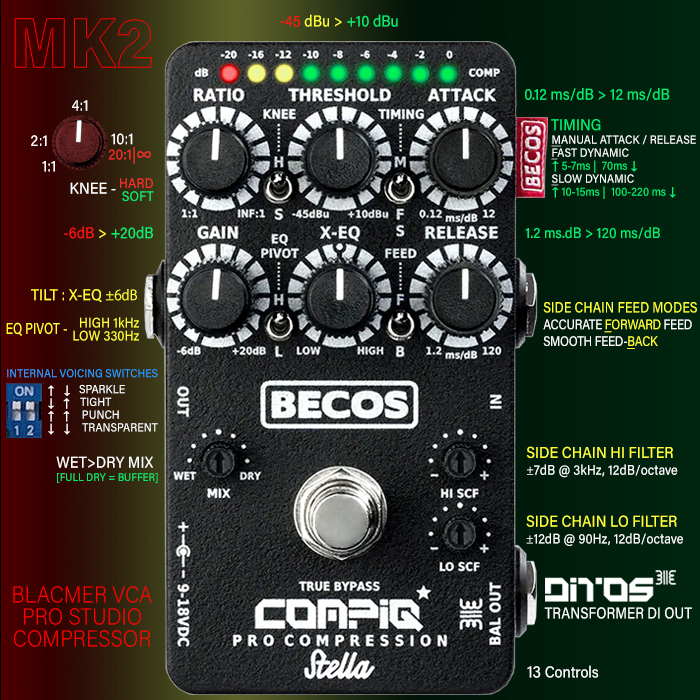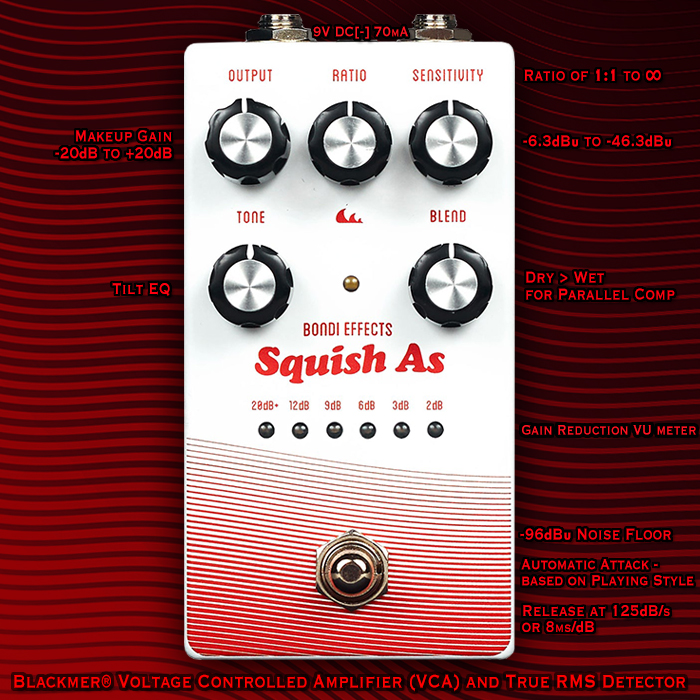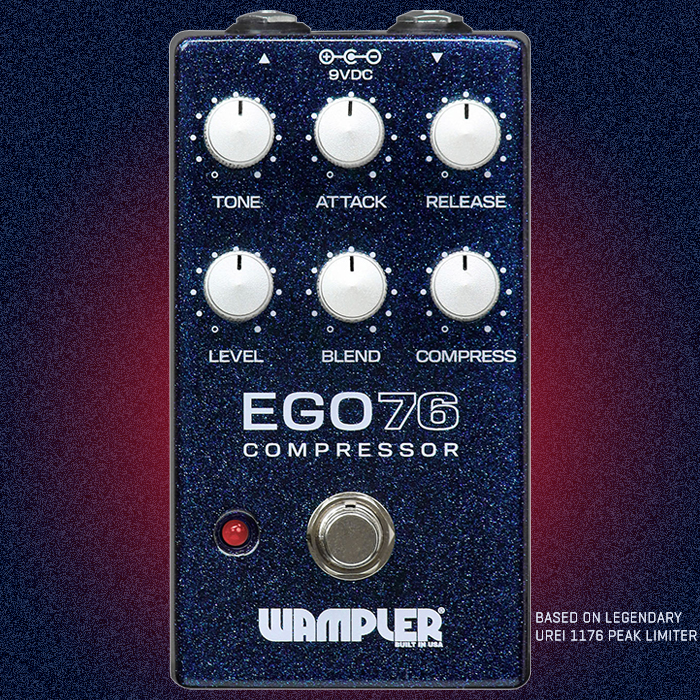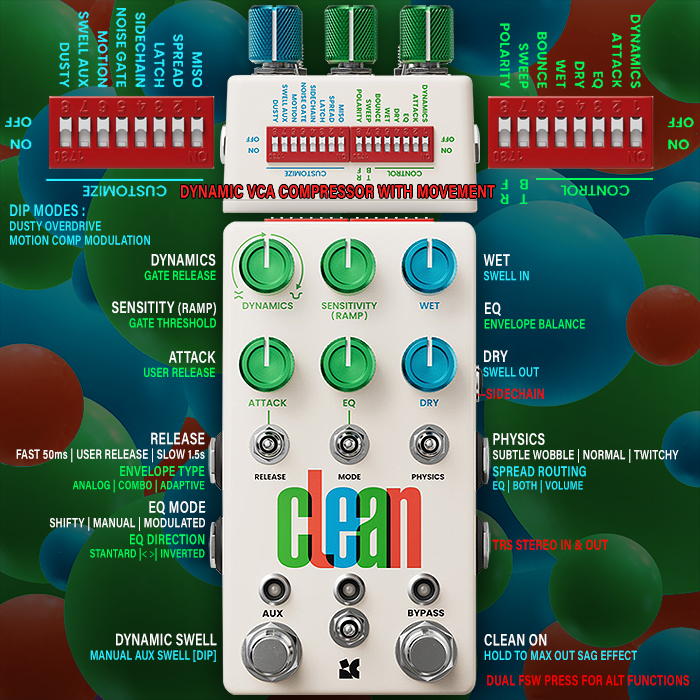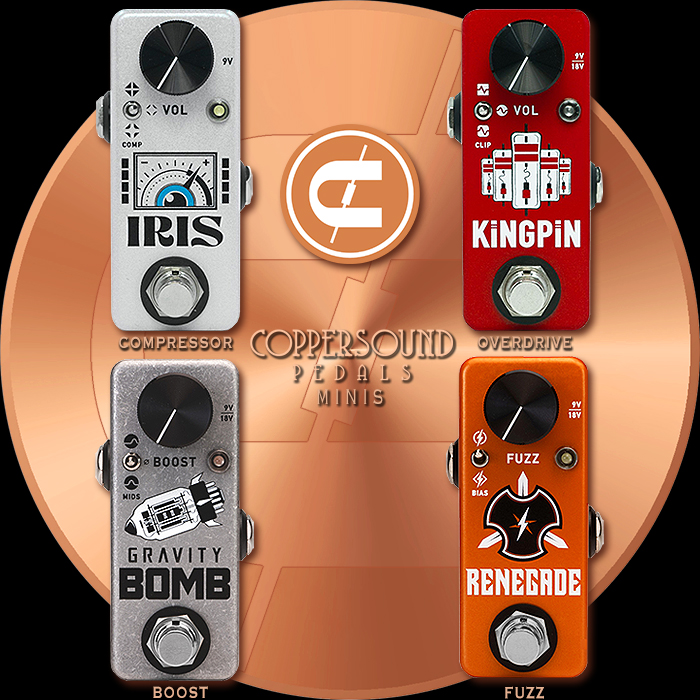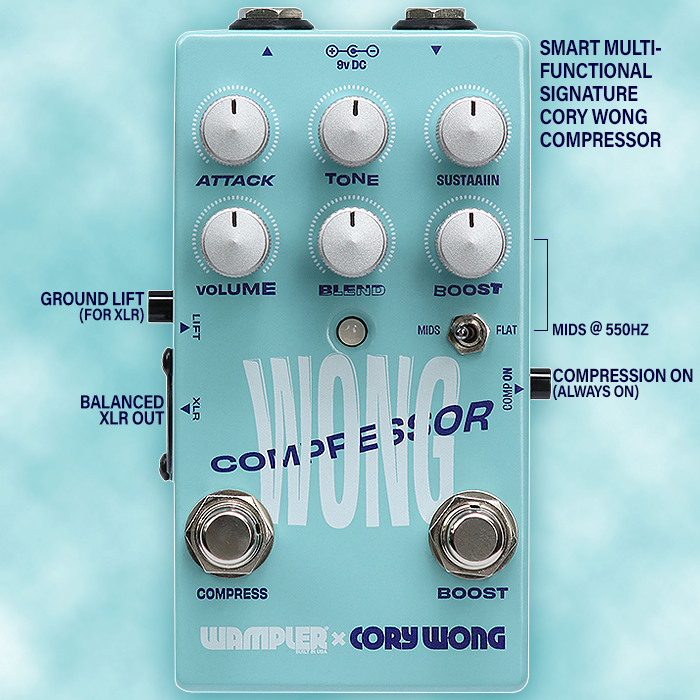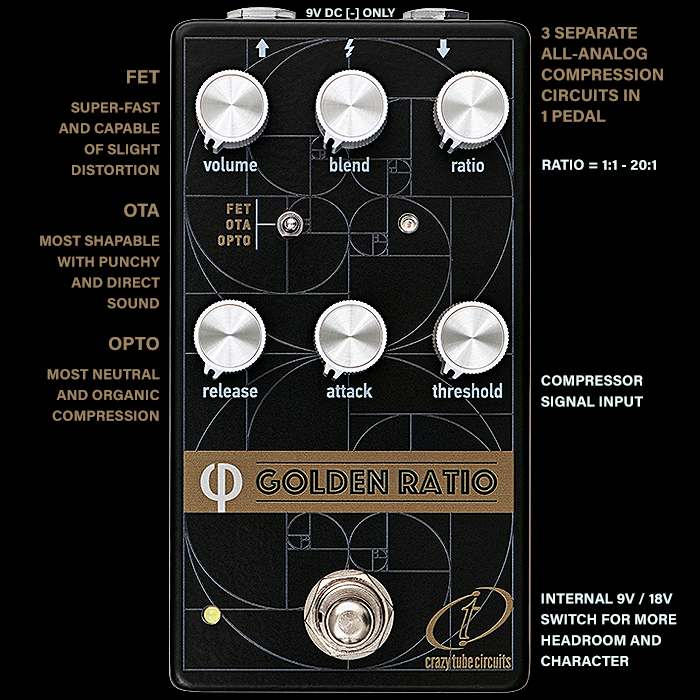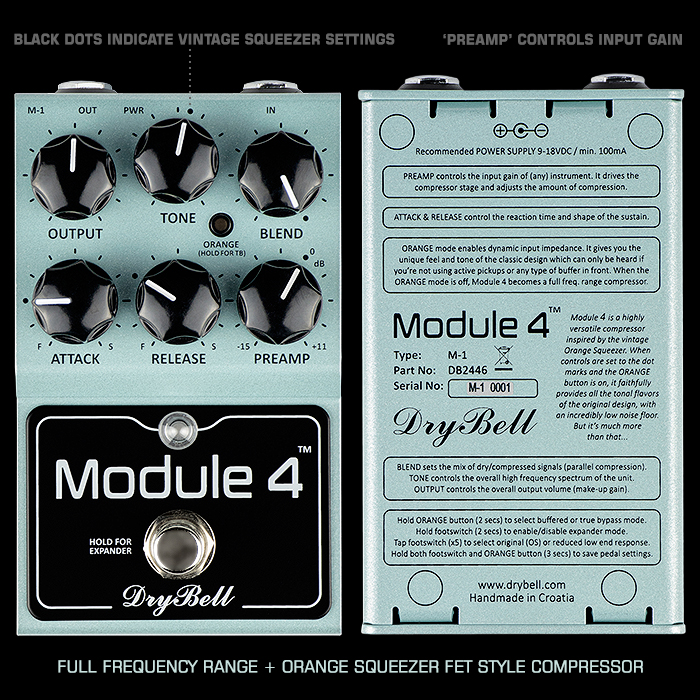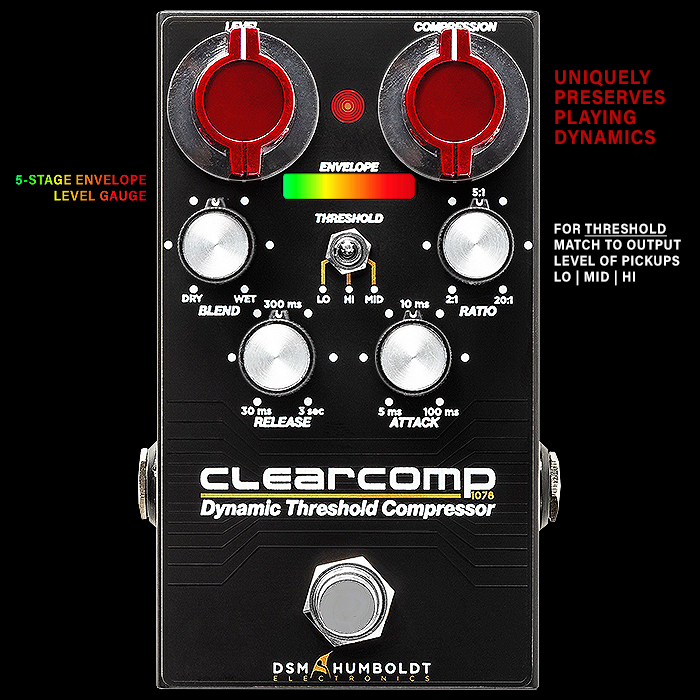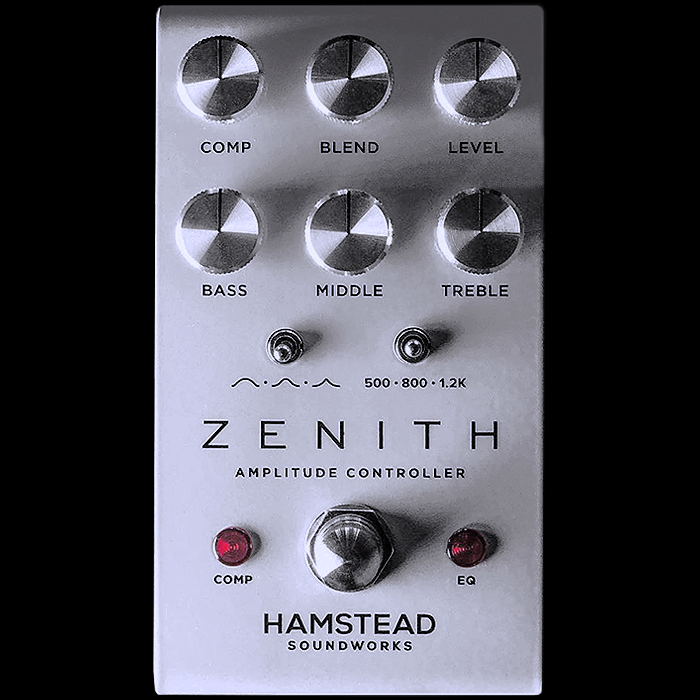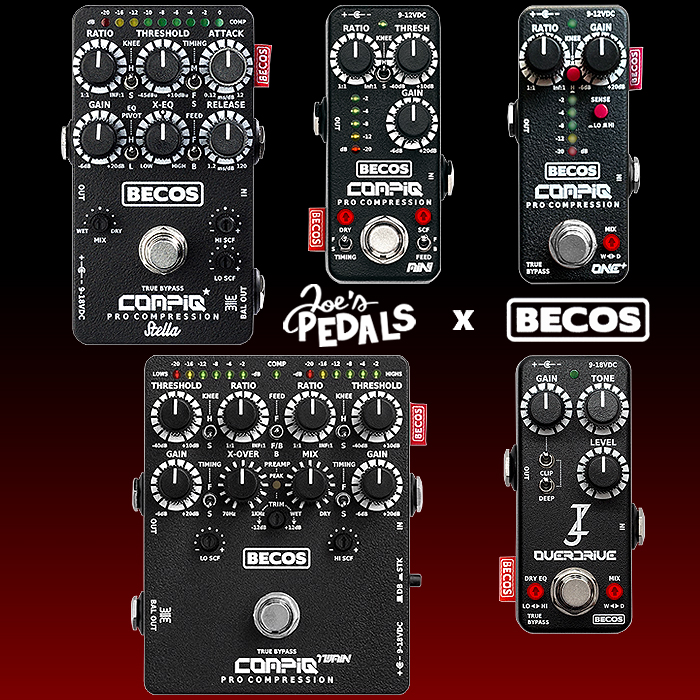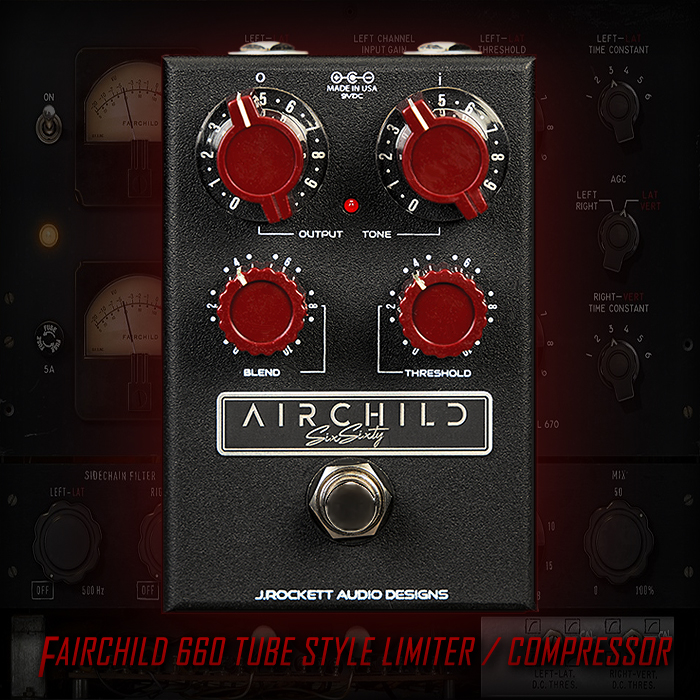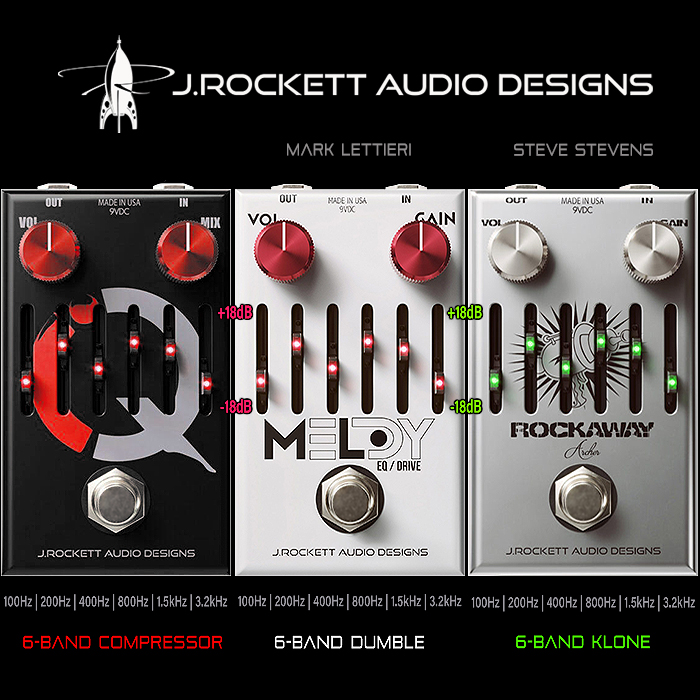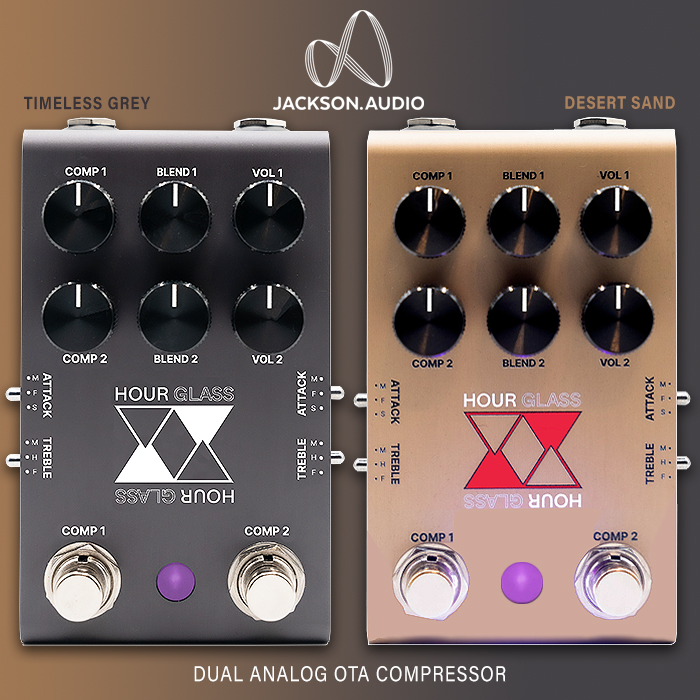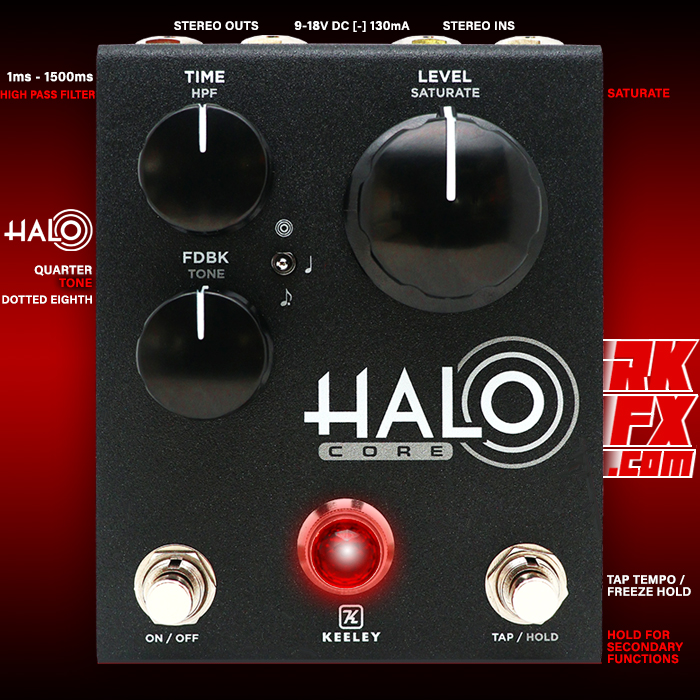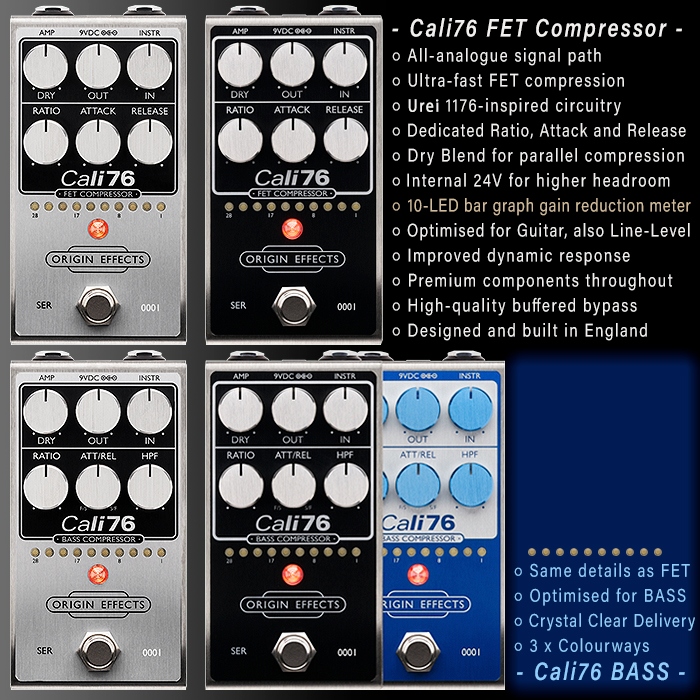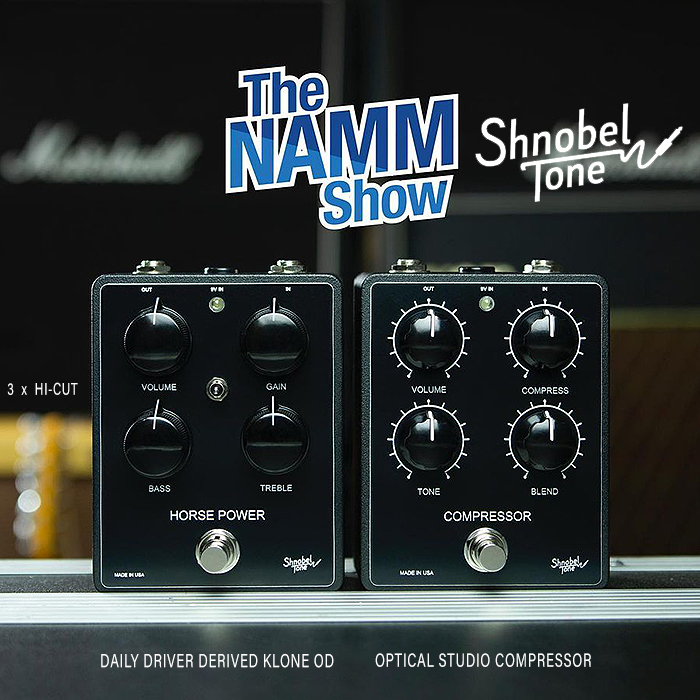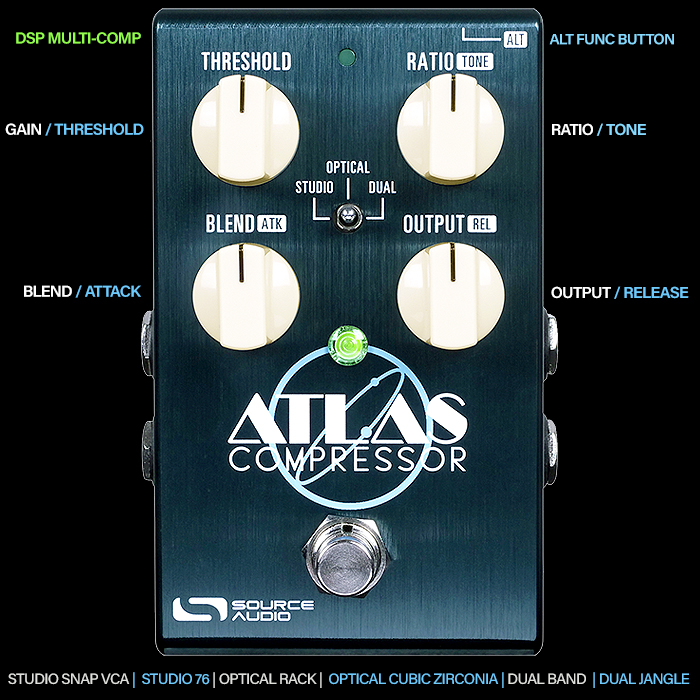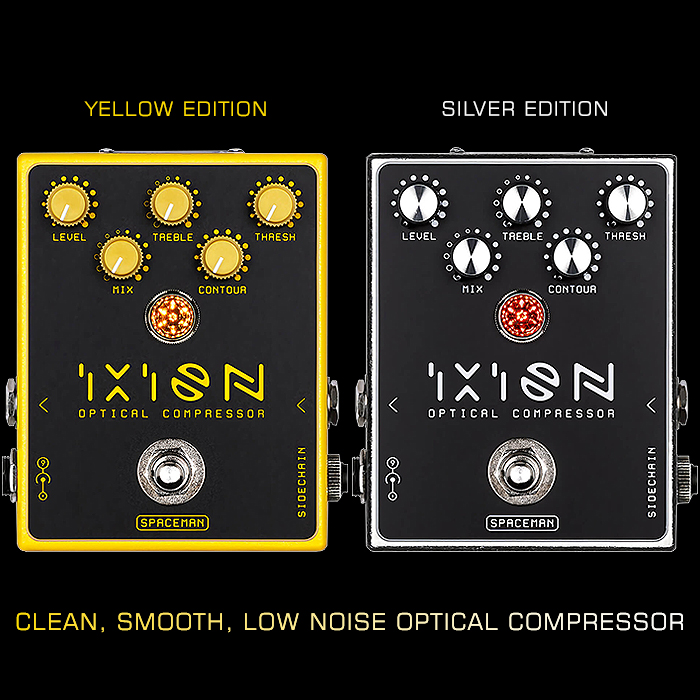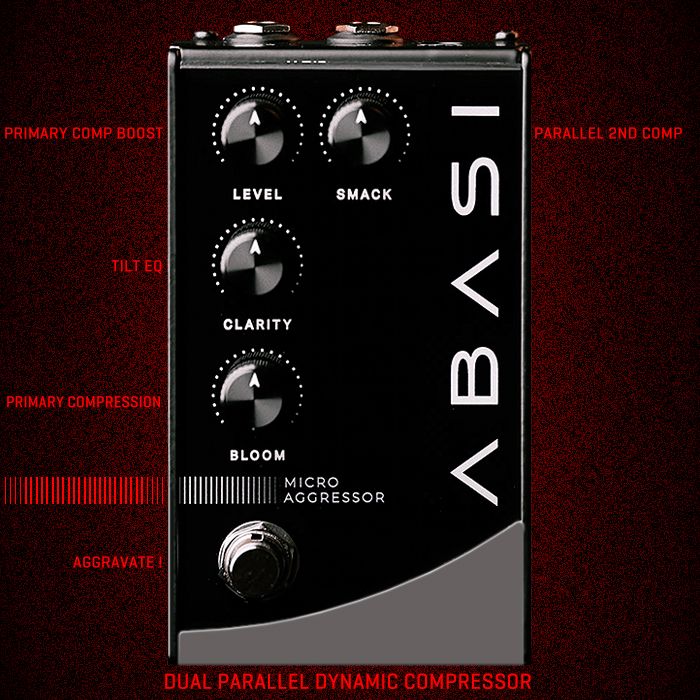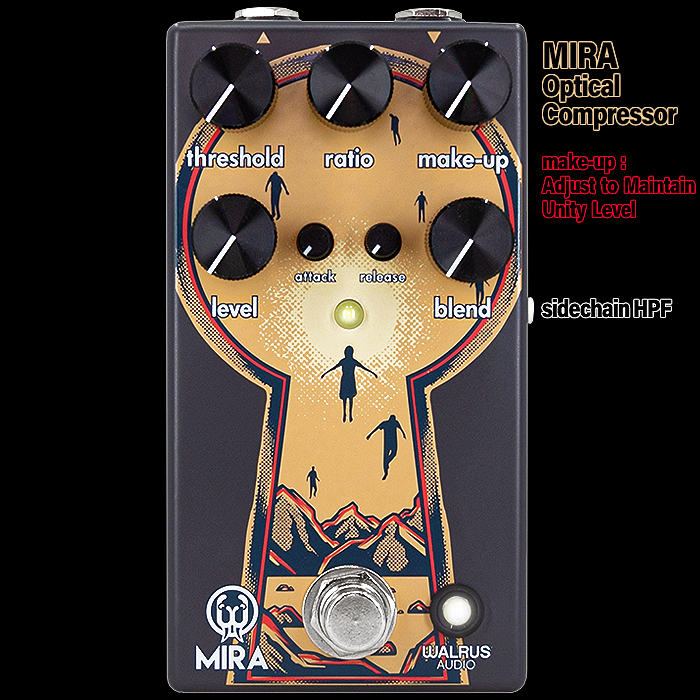4 of a Kind - 4 Knob Compressors
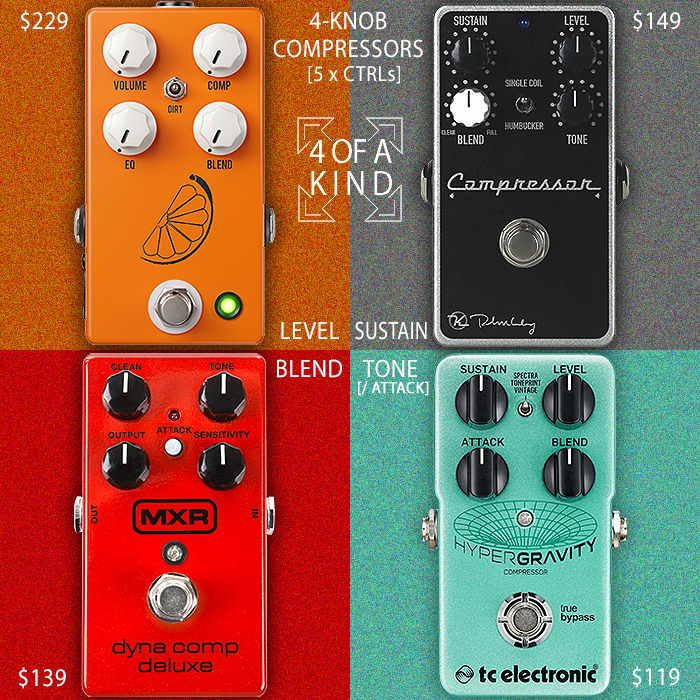
So this time around we have a slightly different take on this format - where each of these pedals has a similar outward control topology - that is to say 4 Knobs, with an additional 5th Switch or Button control.
And while the outward appearance is very similar, internally these are all quite different styles of compression circuits. Interestingly they’re listed out in alphabetical order, which just happens to coincide with a descending order of price!
There are generally considered to be around 5 main types of analog compression - VCA, OTA, Optical, FET, and Delta-Mu re-biased Tube-style compression.
The 4 featured compression circuit types are as follows :
- JHS Pulp ’N Peel - Dan Armstrong 1974 Orange Squeezer Smooth Compressor (Feedback FET Compressor)
- Keeley Compressor Plus - 1974 Ross OTA-based vintage style compressor
- MXR Dyna Comp Deluxe - 1972 OTA-based vintage style compressor, considered the first of its kind
- TC Electronic HyperGravity - Digital DSP Compressor (originally form 2015)
Obviously the original MXR Dyna Comp was the first commercially available compression pedal in 1972, where the Dan Armstrong Orange Squeezer and Ross Compressor materialised a couple or so years later. In fact the Ross Compressor is very much a copy of the Dyna Comp - with just s couple of parts differences - which do though yield a significantly brighter output.
There are various commercial compressors out there based on the Ross Compressor circuit - obviously most notably the Keeley Compressors, and the Wampler Ego. I had initially intended to limit the selection solely to Ross style compressors, but I could not find enough similar ones to complete the full house - which is why I had to cast a slightly wider net here.
All these pedal shave very similar control topologies, not always labelled the same, but mostly the same controls - where all feature variations of Level, Sustain and Blend. Most also have Tone / EQ - while the TC Electronic HyperGravity has ’Attack’ as its 4th Knob control.
All of these deliver slightly different types of compression - which vary in degree of transparency, brightness, and overall fidelity and noise floor. A number of the earliest compressors could become quite noisy - while latterly the key brands were able to filter out those unwanted frequencies for the best part.
So with this selection you have a wide variety of choices to make. The dearest here is nearly twice the price of the cheapest, albeit the cheapest is DSP / Digital, but then again the Dyna Comp Deluxe is just $139. The earliest compressors had typically just a couple of knobs - where some of them could be a little ’dark’ sounding - hence we see added Tone or Brightness controls on most of the current contemporary compressor types.
Here follow the usual individual details :

JHS Pulp 'N Peel (Dan Armstrong style Orange Squeezer) - $229
Controls - Volume, Comp, Dirt Switch : On/Off, EQ, Blend.
Those Dan Armstrong Orange Squeezers were tiny little plugin aluminium boxes - with just an on/off switch - known for their high degree of transparency. JHS have done a great job in evolving that circuit to a more granular device - now with 5 smart controls. This is obviously the priciest compressor in this selection!
Keeley Electronics Compressor Plus (Ross style Compressor) - $149
Controls - Sustain, Level, Blend, Pickup : Singe Coil / Humbucker, Level, Tone.
Keeley's 'bread-and-butter' pedal, and still the best selling compact compressor pedal as far as I'm aware. Evolved from the brighter Ross style of compressor with added controls. This one pretty much sets the benchmark these days!
MXR Dyna Comp Deluxe (Evolution of original Vintage Compressor) - $139
Controls - Clean (Blend), Tone, Output Level, Attack button switch, Sensitivity (Sustain).
An evolution of the original MXR 2-knob Dyna Comp - here with more controls to keep up with the more contemporary iterations of compressors. The first 3 compressors in this listing have very similar control topologies - where they're slightly different labelled. I would imagine the most popular compressors are in and around that $150 price tag. MXR have done a great job in maintaining the innovation within the genre they pioneered - while there are some exceptionally potent compact compressors out there nowadays - like my Becos FX CompIQ Pro Stella!
TC Electronic HyperGravity Compressor (Digital / DSP) - $119
Controls - Sustain, Mode : Spectra / TonePrint / Vintage, Level, Attack, Blend.
The most affordable compressor in this selection - and the only one with a Preset essentially - courtesy of TCE's TonePrint technology. This one is markedly different to the rest, and evolved a good 30 odd years later than the others featured here. As with a lot of pedal genres, many prefer the analog styles of circuits - while there are compelling reasons also for DSP variants - in that they can typically deliver greater range, and usually have a much lower noise floor. I would still imagine that most prospective buyers for these effects would go for one of the 2 mid-priced options here. While each one of these 4 compressors is great in its own way, and has its own advantages.
Take your pick!








